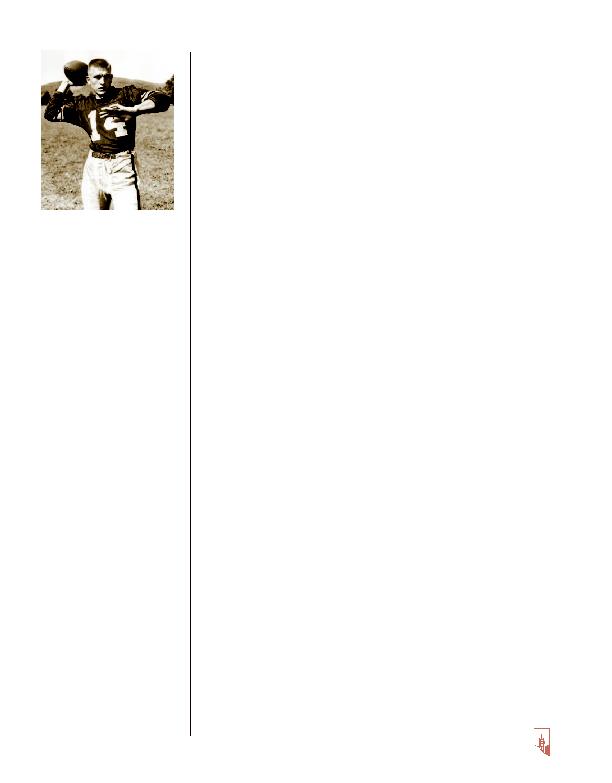
Fame, Butler is one of only 15 who wasn't
drafted.)
tage of the Bonaventure connection to the
Steelers. Fr. Silas told his brother Art that
Butler was worth a look.
use the run-heavy single-wing offense. He
was the last player to make the team, but he
was switched to defensive end.
career path. Sent into the game by Coach
John Michelosen, Butler was confused when
he saw Hartley, a defensive back, injured. He
ran back out to tell his coach the mistake. "I
know who's hurt," Michelosen said. "Get in
there.'"
served him well as he made the transition to
defensive back.
receiver wasn't going to whip me. No way in
the world."
bitter about only one thing.
interview he gives. (He did catch seven passes
with the Steelers, four of them for TDs.) "I
should have been one in the pros. I could
catch the heck out of the ball."
played safety today."
Butler would not have been, said Rooney,
son of the legendary Pittsburgh owner and a
longtime friend of Butler's.
some of the old films and the way he moved,
he was a smooth guy."
Nov. 29, 1959, at Forbes Field, Eagles' star
Pete Retzlaff caught a pass across the middle.
As Butler made a bead on a tackle, Retzlaff
Pittsburgh Post-Gazette. "Some days are bet-
ter than others. That was a bad day."
that settled in was nearly fatal, resurfacing
periodically to this day. He's had both knees
replaced, as well as back surgery to address
problems caused by vertebrae crushed during
his playing days.
tant coach in 1960, but the demands of the
job were too much for his knee to handle, so
he returned to Pittsburgh. He eventually
became a scout and in 1963 became director
of BLESTO (Bears, Lions, Eagles, Steelers
Talent Organization), the NFL's first scouting
combine.
more than 75,000 NFL hopefuls. Dozens of
NFL personnel directors broke into the busi-
ness with BLESTO, including former Steelers
and Bills GM Tom Donahoe, who calls Butler
"one of my favorite all-time people I've met
in football."
career and left him with a knee his son Mike,
a former NFL scout himself, calls the "grossest
thing you've ever seen" is a game Butler feels
blessed to have played and served for more
than half a century. He has no regrets --
other than not getting to play wide receiver.
sons, four daughters, and 15 grandchildren
donned in the Steelers' bumblebee throw-
back uniforms, Butler was succinct and gra-
cious in his acceptance speech.
the voters, and expressing his gratitude for
the life football gave him. Right after his
speech, Butler told the NFL Network,
"Sometimes it feels like you're dreaming still.
It's still hard to believe."
You don't find many people in this day and
age with the principles and the integrity Jack
has. They don't come any better than Jack
Butler."
undrafted kid out of St. Bona-
venture was the Steelers' best
cutting ties with a ninth-round
pick out of Louisville was
unquestionably the worst.
Dining Hall for dinner on the last
day of the Steelers' 1955 train-
ing camp at St. Bonaventure,
which hosted Pittsburgh's sum-
mer camp from 1952-1957.
him his services were no longer
needed. Butler, who would stay
after practice to catch balls from
the kid, was stunned.
Butler told the Buffalo News. "I
never could figure out why he
never got into practice."
and playing semi-pro ball for $6
a game, the quarterback was
signed by the Colts.
Fame in 1979.
lege game -- a 22-21 loss to St.
Bonaventure in 1951.)
biggest mistake
Steelers ever made
excelled elsewhere as No. 19.